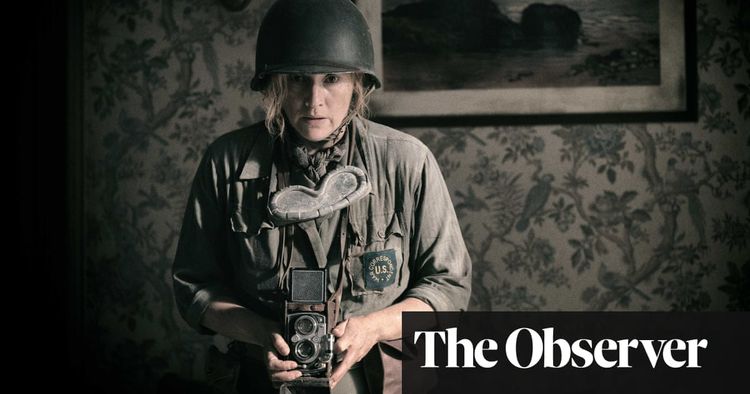Kate Winslet insisted her film about Lee Miller must have female director

Kate Winslet was adamant that the upcoming movie, where she portrays the bold photojournalist Lee Miller, needed to be helmed by a woman director.
The actor who won an Oscar, stars in and helps produce the movie "Lee," which is now showing in theaters. She aimed to show American Miller as someone who seeks and tells the truth. She believed Miller had a unique way of reporting on important events like the battle of Saint-Malo during World War II, as well as the field hospitals in Normandy and the concentration camps of Dachau and Buchenwald.
Winslet mentioned that it was clear that a woman would be the one directing the film, according to the production notes.
Miller is most well-known for being a Vogue model and the romantic inspiration for surreal artist Man Ray in her youth. However, during World War II, she broke boundaries by becoming a groundbreaking war correspondent and photographer. She famously stated, "I prefer to capture a moment on film than to be the subject of one."
When discussing that specific period in Miller's life, Winslet stated that she aims to challenge the "preconceived notions about Lee Miller being only a muse and object of male artists' attention".
Winslet gave Ellen Kuras the chance to be the director of the movie. Kuras had previously worked as a cinematographer on movies like Eternal Sunshine of the Spotless Mind and A Little Chaos with Winslet. Lee is Kuras's first full-length film as a director. She also worked as a co-director on The Betrayal (Nerakhoon), a documentary from 2008 about refugees. This film won an Emmy award.
Even though Winslet has been considered for an Academy Award five times and was successful in 2009 for The Reader, it took her over eight years to bring the movie about Miller to the screen.
Kuras informed the Observer that potential investors had been condescending in their rejection of Lee's story as "a woman's story", questioning why they would want to create a narrative about her.
She mentioned that previous tries to create a movie about Miller had usually focused on a male viewpoint, portraying her as a "broken woman" rather than recognizing the impact that the war had on her.
"She was similar to many others who came back from the war with PTSD and found it difficult to discuss their experiences," she stated.
Kuras is also optimistic that the movie will change how people view Lee, focusing on her accomplishments and personality rather than just the men she was associated with. She believes that women are often defined by the men in their lives, but Lee should be recognized for her transition from being in front of the camera to taking control behind it. Lee was able to shape her own narrative and create her own legacy.
Lee is an inspiring figure because instead of waiting for the chance to be a war correspondent to come to her, she took matters into her own hands. With determination and a strong sense of purpose, she sought out opportunities to share the truth and seek justice.
She described her movie as showcasing a female character who boldly embraced the depths of despair.
Winslet mentioned recently that she had chosen not to conceal her natural stomach rolls while filming a scene in which she wears a bikini. The movie will also depict Miller's well-known self-portrait in Hitler's bathtub at his residence in Munich, showing her boots staining the bathmat with mud from Dachau.
Kuras explained that, since Miller experienced feeling like a mere object in her previous role as a model, she was particularly focused on making sure that the scenes in her films did not come across as overly sexual or dehumanizing.
The movie is inspired by Antony Penrose's book, The Lives of Lee Miller, which details the life of his mother from her marriage to the surrealist artist Roland Penrose.
Kuras expressed gratitude to Antony Penrose for allowing them to explore Miller's personal archive. They were able to view more than just the selected photographs, as they were able to examine Miller's contact sheets. This access provided a deeper insight into Miller's perspective and how she captured the world as she traveled.
Antony Penrose was a great collaborator in the making of the movie. Kate spent a significant amount of time in Farley Farm [in Sussex], where Lee resided after the war.
Winslet mentioned that it was important for her to browse through all of Lee's photographs, but what truly aided her the most was reading his heartfelt letters.
When she first reached out to Penrose, he informed her that "numerous individuals have attempted to create movies about Lee, we have a complete collection of scripts in the attic that were never brought to life." When she inquired as to why, he responded, "they simply didn't capture her essence."

















































